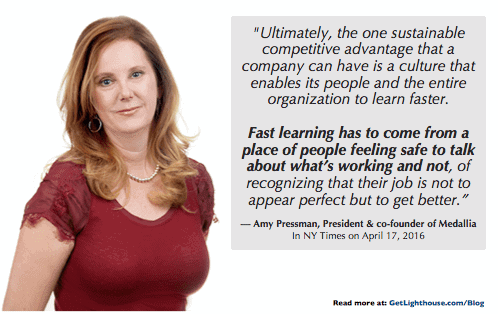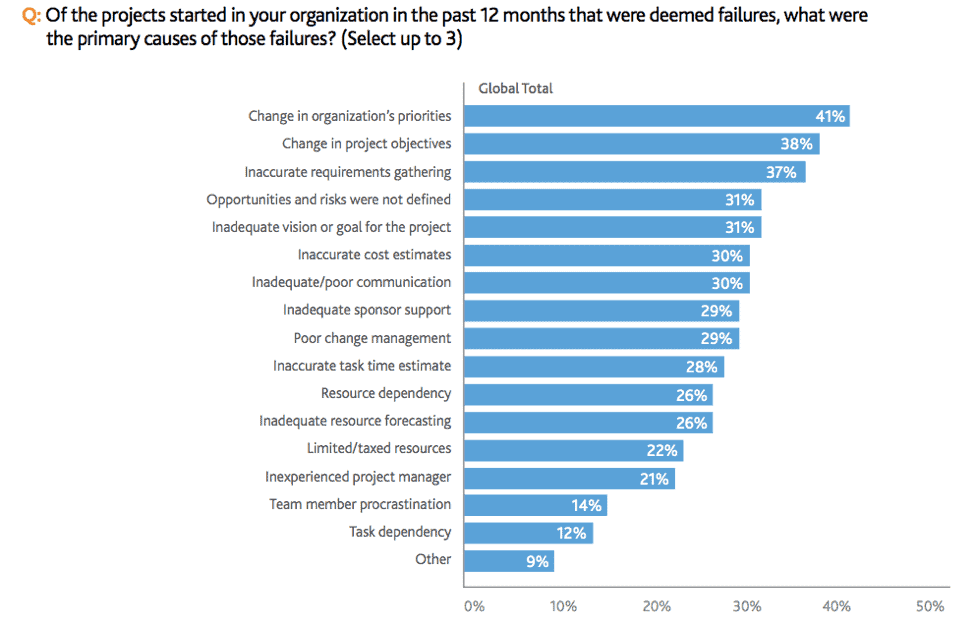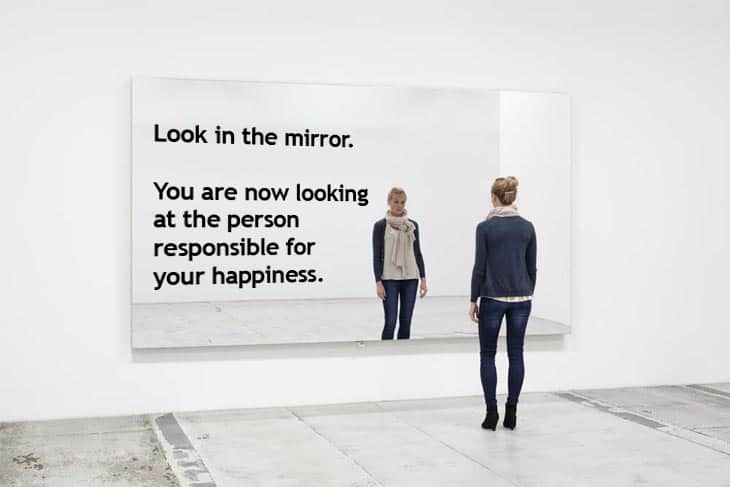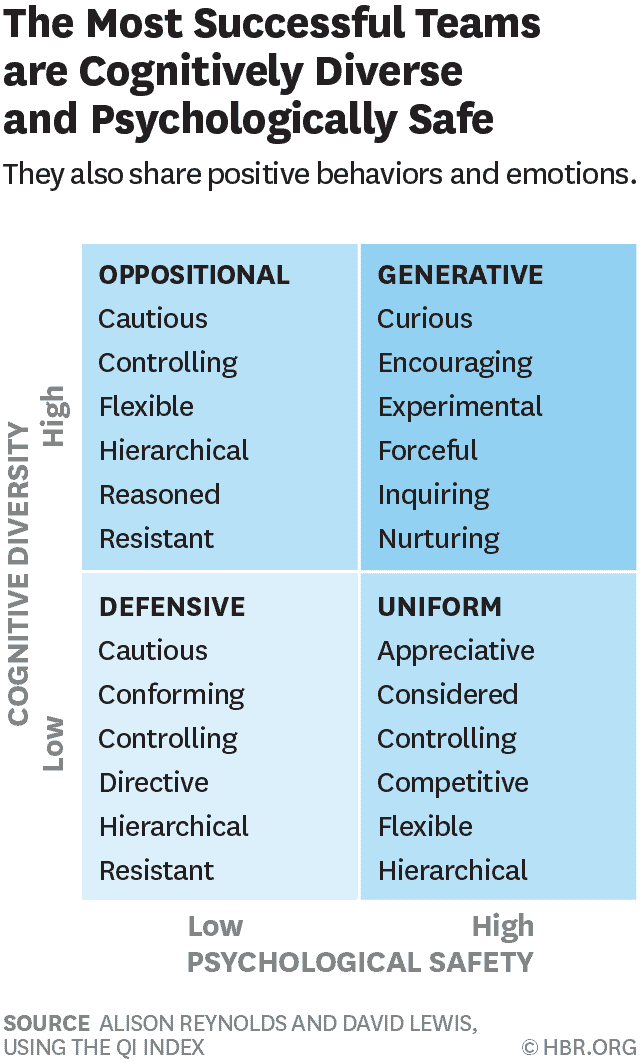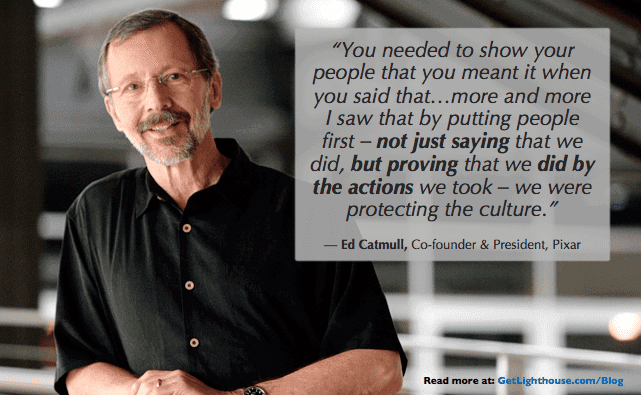The huge success of Google and their Adwords product has allowed them to ask some of the biggest questions that every company wants to know. None are bigger than the age-old, "What makes a great, successful team?"
Because they have the money ($32 billion in revenue), resources (dedicated People Ops and Analytics orgs), and scale (over 60,000 employees) they spent millions studying what makes high-performing teams work.
One of their researchers, Julia Rozovsky, identified patterns of behavior that separates their worst teams (Team A) from their great ones (Team B):
"Team A [is] filled with smart people, all optimized for peak individual efficiency. But the group's norms discourage equal speaking; there are few exchanges of the kind of personal information that lets teammates pick up on what people are feeling or leaving unsaid.
...In contrast, on Team B... all the team members speak as much as they need to. They are sensitive to one another's moods and share personal stories and emotions. While Team B might not contain as many individual stars, the sum will be greater than its parts.”
As it turns out, their best performing teams provided an environment where people were enthusiastic about sharing ideas and solving problems.
Google's research from 2011 showed that teams with an open-minded culture, or psychological safety, were more likely to achieve success in a project. [Ed. note: Some of their recent problems likely stem from straying from their own findings.]
While you want to foster open communication, be wary of promoting toxic positivity, which emphasizes happiness over realism. True psychological safety means welcoming critical perspectives as well, allowing for more robust solutions.
Bad Teams are a Growing Problem
The Project Management Institute (PMI) reported that project success is at its lowest in years. In their report, "The High Cost of Low Performance," they found that fewer major projects were completed on time and within budget in 2016, than in 2012.
They reported that, "$122 million [are] wasted for every $1 billion invested due to poor project performance, a 12% increase over last year.”
The 3,000+ project managers, senior executives, and corporate leaders they surveyed revealed that most projects fail due to these reasons:
Across the range of reasons, a common theme emerges: projects fail because teams don't know how to communicate, organize, and prioritize. And this occurs, because people struggle to work together, because they lack the psychological safety to communicate.
As you face new and complex problems in your business, you need to create a culture where employees are excited about finding solutions together, and comfortable confronting issues as they arise.
Why Managers Need to Create Psychological Safety to have Great Teams (and how to do it)
Let's start with a simple definition. Psychological safety is defined as the ability to, "show and employ one's self without fear of negative consequences of self-image, status or career."
Workplaces that prioritize this are providing emotional safety nets. Employees feel free to express their ideas and opinions without punishment.
This causes them to constantly innovate. They feel empowered to take risks, have candid discussions, and brainstorm creative solutions. To them, failures are learning experiences and confronting issues leads to positive outcomes.
Believe it or not, even Steve Jobs was a fan of this, when he had "Cauldron" meetings, even if he never knew or used the term.
Psychological safety's measurable benefits
This attitude and comfort level is crucial to solving new, uncertain, and complex problems. Gallup finds that psychological safety can lead to a variety of benefits including: "27% reduction in turnover, a 40% reduction in safety incidents, and a 12% increase in productivity."
But as explained in our post about constructive discontent, most workplaces don't have this. Many employees don't speak up nor disagree out of fear of losing their jobs, or just as bad, learned helplessness.
That's why it's important to make a conscious effort to ensure you and your teams have psychological safety.
Today, we show you how.
1) Make Psychological Safety a Part of Your Culture
Implementing psychological safety can be very hard. Gallup's Jake Herway learned this while working with a client organization.
He noticed that employees were very hesitant to express their ideas:
"...The team still felt too much uncertainty to be fully engaged. It was clear to me that no one in the department felt safe defending or actively pursuing a new idea, an opinion or a criticism -- they were worried about their job. The environment wasn't negative; it included plenty of cordial interaction and can-do spirit in person. But it was unproductive once real work began."
So, he developed an exercise that urged employees to be more open about their thoughts and feelings. They were asked to explain how their individual efforts impacted the team.
Here are the sample questions:
- What can your team count on you for?
- What is your team's purpose?
- What is the reputation you aspire to have?
- What do you need to do differently to achieve that reputation and fulfill your purpose?
One by one, the employees started to explain how they contributed to projects. Then, their team members shared gratitude for their efforts. Soon, the workers felt appreciated and highly valued.
Engraining it in their culture
The next step was to make sessions like this a formal part of the culture. Herway asked more questions:
- Why do you come to work every day?
- How does your team achieve that purpose together?
- Then, with that purpose and process in mind, what do you aspire to be known for in the company?
- What is the brand you want to create?
The team put their answers into a corporate playbook called, "Guiding Principles." This book reinforced a shared direction, approach, and identity to build unity and psychological safety among the team.
This helped the organization create better staff meetings, interact clearer with business partners, but most importantly, increase workplace morale and engagement.
Building the habit
Whenever an employee asks for help, introduces a new idea, or challenges an existing process, they can use the playbook to speak in a language that makes their team members feel comfortable, not attacked. All of this promotes psychological safety, and avoids the often toxic cultural approach of silencing others.
Six months after creating the playbook, Gallup reported that the teams practicing these new habits increased their engagement by 4% according to their employee engagement survey. Herway found that to be a meaningful improvement they could build on.
Manuals like this company's Guiding Principles is a step to assuring psychological safety in your workplace. However, it's not enough.
As a manager, it's important for you to lead by example and reinforce the ideas you want your team to represent.
2) Hire for Cognitive Diversity
Another predictor of a successful team is its high diversity. Not simply gender, race, and age diversity, but specifically, cognitive diversity.
Cognitive diversity is defined in Harvard Business Review as differences in "perspective or information processing styles." The AEM cube was used by researchers to further define it as:
- Perspective: the extent to which individuals prefer to deploy their own expertise, or prefer to orchestrate the ideas and expertise of others, when facing new situations
- Knowledge processing: the extent to which individuals prefer to consolidate and deploy existing knowledge, or prefer to generate new knowledge, when facing new situations
In simplest terms, cognitive diversity is the different ways people think and solve complex problems.
It doesn't matter how much psychological safety you create if everyone thinks alike. Cognitive diversity plus psychological safety is a powerful one-two punch for great teams.
Hire for diversity of thought.
In our article about emotional intelligence, we explained one of the pitfalls of diversity hiring. Although it has a big ROI, most companies don't reap the benefits of it.
This is because they tend to hire diverse people who have similar perspectives.
For example, researchers Alison Reynolds and David Lewis asked a diverse team at a biotechnology startup to complete a strategic execution exercise. Unfortunately, they performed terribly.
The team was diverse in gender, age, and ethnicity, but they all had the same thought process. They lacked enough unique perspectives to solve complex problems.
After a decade of performing these exercises, researchers Lewis and Reynolds concluded that cognitively diverse teams tend to perform better than those who think alike:
Building a team with diverse ways of thinking, who feel safe expressing them, makes a huge difference in the speed and quality of the work a team performs.
This is why you should see diversity as a multidimensional issue. Don't hire people solely based on their inherent traits (gender or sexuality). Consider their acquired traits (experience and knowledge), too.
3) Be Aware of Your Attitude
In another recent HBR article, Lewis and Reynolds explained their findings after questioning 150 senior executives around the world.
They asked them to choose five words that best described the dominant behaviors and emotions in their organization. Their answers were organized into these four types:
- Generative (high cognitive diversity, high psychological safety)
- Oppositional (high diversity, low safety)
- Uniform (low diversity, high safety)
- Defensive (low in both).
This table shows the behaviors correlated with each group:
Teams in the Generative quadrant were open to learning and experimenting. They were "forceful” about solving problems, which means they enjoyed analyzing ideas, and were persistent in trying to find solutions.
These psychologically safe environments allowed them to express their ideas without fear.
In the lower quadrants, employees felt like they were constrained by management. They were also dominated by a hierarchical culture; they didn't feel comfortable with challenging those in authority.
If you have an unsafe culture, you are hurting your team's morale and ability to innovate. Sadly, most leaders don't even know they're doing it.
Start by increasing your self awareness
Most managers are the root cause of their poor performing teams. For example, New Resource Bank sent an employee survey asking what they believed contributed to the company's poor work morale.
Most of the workers blamed CEO, Vincent Siciliano. They saw him as overbearing and un-empathetic about other's emotions.
When Siciliano found this out, he was very surprised and defensive. But, he knew that something had to change:
"He realized that, despite all the skills he had developed through his years of management education and professional development, he'd never been directed to take a long look in the mirror and ask questions about who he was, what he valued, and what it really meant to be a leader."
Siciliano took responsibility for his attitude and transformed it to a more empathetic one.
A major turn-around
This caused the bank's teamwork and employee opinion scores to dramatically increase. Now, Siciliano leads a high-performing organization that focuses on both relationships and results.
If you decide to become more open-minded, your team will feel safer opening up. They will then be stronger problem-solvers like the ones in the Generative quadrant.
It starts with you. Consider how your actions affect others. When you find problems with yourself, work to change your unhelpful behavior by improving your self awareness. Stopping bad habits isn't easy, but it's essential for any great leader. This is exactly why we dedicated an entire post recently to the subject of building up your self awareness and the impact of doing so.
Innovative teams happen due to great efforts by their leaders.
Innovation is the result of a safe and diverse environment where employees are able to trade and learn ideas.
Most managers make the mistake of hiring people who have the same ideas and thinking styles as them. They're not aware that they're hurting their team more than helping.
When employees have diversity, not just in appearance but in mindset, organizations greatly benefit. They tackle complicated problems with different perspectives that would never happen with a team shared the same ideas.
At the same time, leaders must also be aware of how their presence affects their workplace. A controlling attitude or lack of psychological safety felt on their teams can prevent innovation from happening.
If you want a more innovative team, work to become more self aware, so you can better understand how you influence your team's performance. Make it safe for people to disagree, even with you, and seek out cognitive diversity when constructing your team. You may be surprised what a difference these two acts can make.
